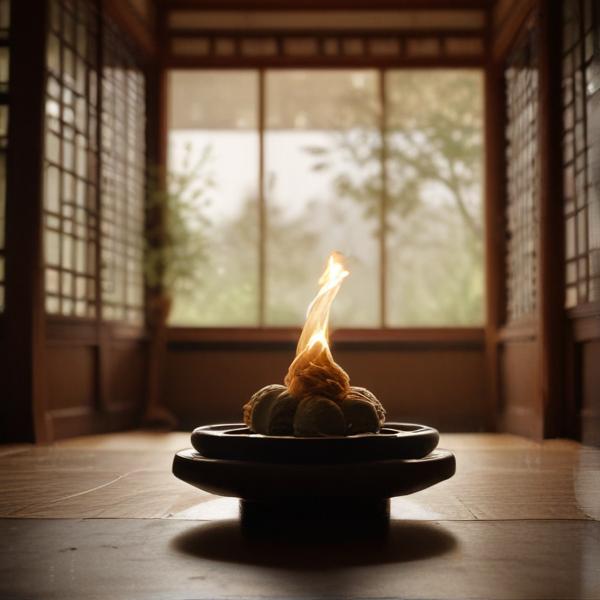基本信息 (Basic Information)
含义与用法 (Meanings & Usage)
中文核心释义 (Core Chinese Meaning): 搅拌、缠绕、用力扭转,或指用绳子等勒杀。
英文核心释义 (Core English Meaning): to twist, to wring, to entwine, or to strangle with a rope.
象形意义 / 为何这么写 (Pictographic Meaning / Writing Rationale)
文言文释义 (Classical Chinese Meaning)
与现代意义相近,常指用绳索缠绕、绞杀,以及搅拌、扭转等动作。Similar to modern meaning; often referred to strangling with rope, twisting, or entangling actions.
深入学习 (In-depth Study)
字源故事 (Origin Story)
字形演变 (Character Evolution)
常用词语和例句 (Common Words & Examples)
绞刑 (execution by strangulation (hanging or garrote))
古代有用绳索执行绞刑的刑罚。
Eng: In ancient times, death sentences were sometimes carried out by strangulation using a rope.
绞尽脑汁 (to rack one's brains)
他为了解决问题绞尽脑汁。
Eng: He racked his brains to solve the problem.
搅拌 (to stir, to mix (note: often interchangeable with '搅', see notes))
请用筷子把蛋液搅拌均匀。
Eng: Please stir the egg mixture evenly with chopsticks.
相关成语 (Related Idioms)
绞尽脑汁
Meaning: to rack one's brains
多语言翻译 (核心释义) (Translations (Core Meaning))
- French: tordre, étrangler, entrelacer
- German: drehen, würgen, strangulieren
- Spanish: retorcer, estrangular, entrelazar
- Italian: torcere, strangolare, intrecciare
- Portuguese: torcer, estrangular, entrelaçar
- Russian: скручивать, душить, переплетать
- Arabic: يلوي، يخنق، يشبك
- Persian: پیچاندن، خفه کردن، درهم پیچیدن
- Dutch: wringen, wurgen, vlechten
- Polish: skręcać, dusić, splatać
- Vietnamese: vặn, siết cổ, đan xen
- Ukrainian: крутити, душити, переплітати
视频学习资源 (Video Learning Resources)
通过以下链接在热门视频网站搜索 "绞" 的更多讲解:
Search for more explanations of "绞" on popular video sites:
- 在 Bilibili.com 搜索 "绞 字源 说文解字" (Search on Bilibili)
- 在 YouTube.com 搜索 "绞 character origin etymology" (Search on YouTube)
网络参考 (Web References for "绞") ()
网络内容摘要 (Web Content Summary):
-
核心含义与起源: “绞”(拼音:jiǎo)最初的意思是将细线交叉、扭结成绳索,带有“缠绕、纠缠、拧”的动作。其字形与“丝”有关,表示与线或纱类事物有关。 Core Meaning & Origin: The primary meaning of "绞" (jiǎo) is to twist or intertwine fine threads into a rope; the character relates to silk, indicating an action of twisting, entangling, or wringing.
-
文化与历史背景: “绞”最早见于秦代的《说文解字》小篆,古时不仅用来指制作绳索,也作为刑罚之一,意指用绳索勒死(如“绞刑”),在古文中常作此义。 Cultural & Historical Background: The character appeared as early as the Qin Dynasty. In addition to its literal use, it referred to an ancient execution method ("hanging/strangling," as in "绞刑").
-
常见用法及相关词语: 常见词有“绞带”(古代丧礼用的麻带)、“绞刑”(绳索处死)、“绞汁”(挤出汁液)等。易与“搅”(搅拌,混合)混淆,注意区分动作方向和对象。 Common Usages & Related Words: Typical phrases include "绞带" (funeral hemp belt), "绞刑" (execution by strangulation), and "绞汁" (to extract juice by wringing). Note difference from "搅" (stir, mix); "绞" involves twisting, while "搅" refers to stirring or agitating.
总结: “绞”表示交缠、拧紧的动作,既用于具体(如拧绳、挤汁),也有古代刑罚含义,相关词汇和成语多依此引申。 Summary: "绞" conveys the idea of twisting or intertwining, both physically (like twisting rope or wringing juice) and metaphorically (ancient punishments). Its related words and phrases are generally derived from this core meaning.
绞的解释|绞的意思|汉典"绞"字的基本解释 - 漢典
绞带。—— 《仪礼·丧服》 绞,横三缩一。—— 《仪礼·士丧礼》 。注: "所以收束衣服为坚急者也,以布为之。" 两股相交谓之绞。—— 《礼记·杂记》 疏 (3) 又如:绞带(古代丧礼中所系麻带);绞绡(生丝织成的薄纱、薄绸);把铁丝绞在一起;绞汁(挤压汁水);绞巾 ...
绞_百度百科
绞(拼音:jiǎo)是汉语通用规范一级字。此字始见于《说文解字》小篆,但是产生时间不晚于秦代。绞的本义为将细线相交扭结而成的绳索。引申为拧、扭、缠绕,又引申为用于纱、毛线等绳索类物品的量词。古代还特指勒死,即用绳缢死犯人的刑罚。
更多图片 (绞 More Images) ()
